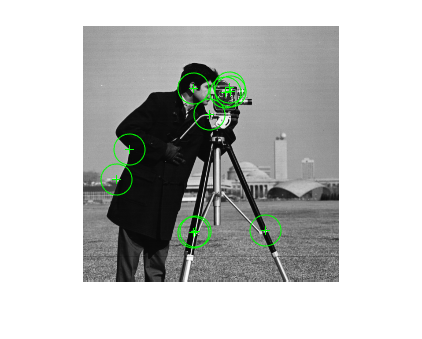ORBPoints
Object for storing ORB keypoints
Description
An ORBPoints object stores the Oriented FAST and rotated BRIEF
(ORB) keypoints in an image. You can specify the keypoints and store them as an
ORBPoints object. You can also use the detectORBFeatures
function to detect the ORB keypoints in an image. The detectORBFeatures
function stores the detected ORB keypoints as an ORBPoints object. Use
Object Functions to plot, select, and manipulate the
detected ORB keypoints.
Creation
Description
points = ORBPointsORBPoints object with default property values.
points = ORBPoints(location)ORBPoints object from a set of location coordinates
specified by location. The location input sets the
Location property.
points = ORBPoints(location,Name,Value)ORBPoints(location,'Count',15)
creates an ORBPoints object with Count property
set to 15.
Properties
Object Functions
isempty | Determine if points object is empty |
length | Number of stored points |
plot | Plot points |
selectStrongest | Select points with strongest metrics |
size | Return size of points object |
selectUniform | Select uniformly distributed subset of point features |
select | Select point or region features during code generation |
Examples
Tips
Although ORBPoints can hold many points, it is a scalar object.
Therefore, numel(ORBPoints) always returns 1. This value can differ from
length(ORBPoints), which returns the true number of points held by the
object.
References
[1] Rublee, E., V. Rabaud, K. Konolige, and G. Bradski. "ORB: An Efficient Alternative to SIFT or SURF." In Proceedings of the 2011 International Conference on Computer Vision, pp. 2564–2571. Barcelona, Spain: IEEE, 2011.
Extended Capabilities
Version History
Introduced in R2019a

